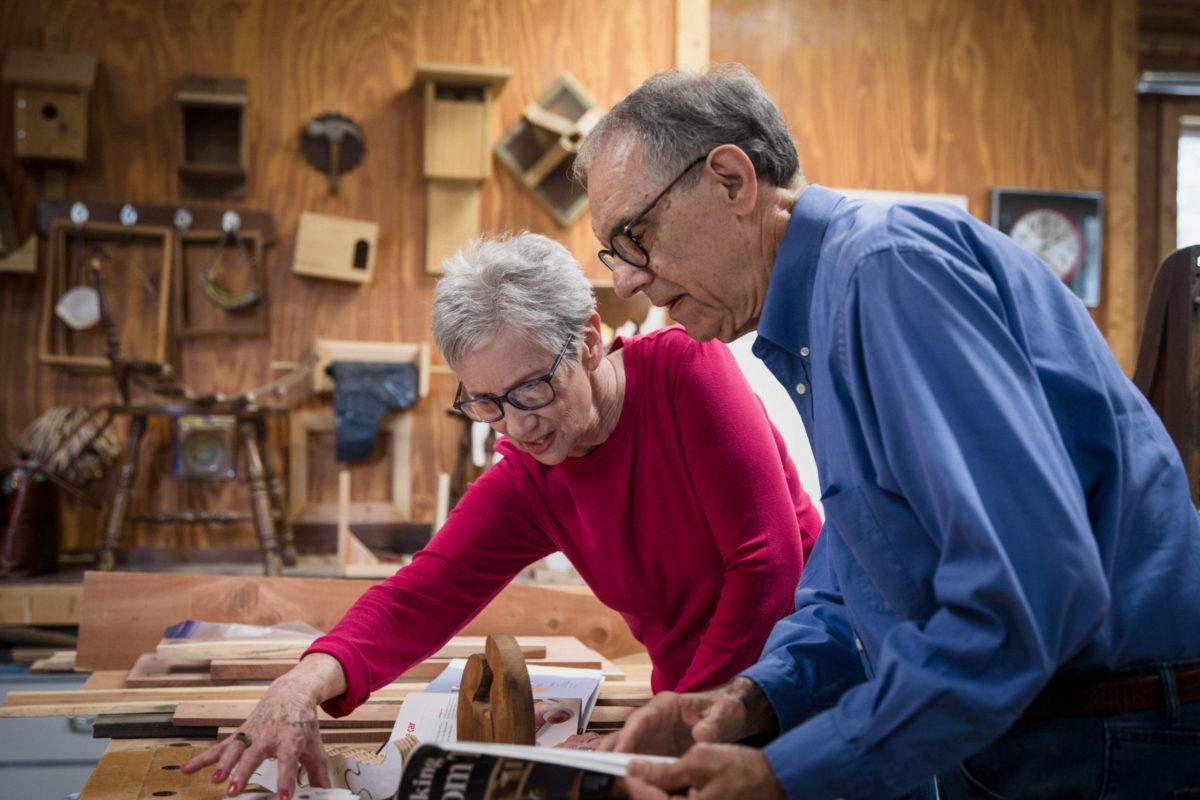The Amazing Benefits of Hobbies for Seniors

Some people embrace creativity, while others may say, “I can’t even draw a straight line!” The truth is we are all born with the ability to be creative, but the definition is often narrowed to a point that we may not recognize our own genius.
Reassessing your creative potential in retirement can have more benefits than you might think. Studies show exploring hobbies for seniors can improve physical and mental health as well as increase social activity.
You ARE Creative
If you think of creativity as painting and drawing, it may be time to look beyond the traditional roles to recognize you have been creative your whole life. Think of times you substituted one thing for another in a pinch and people loved the result. Or the day one of your kids invited their friends for dinner and you scrambled to triple the food in 90 minutes. Thinking outside the box and problem-solving shows a creative mind at work.
We are all born creative, but depending on how you grew up or the schooling you had, creativity may have been seen as less important than math or science. Maybe you had the burning desire to paint, but staying within the lines proved too frustrating. You are not alone. The great news is that retirement gives you a chance to reset your perceptions and explore all sorts of hobbies for seniors.
Have you ever considered…
- Going to a painting party?
- Taking a pottery class?
- Learning how to make pastries?
- Tying flies for fly fishing?
- Going rock hunting and polishing the interesting stones you find?
- Turning those stones into jewelry?
- Taking singing lessons?
- Volunteering at the library to help people with research or storytelling?
- Putting unexpected objects together to make bird feeders?
Has this list gotten you thinking about how you can explore your own interests?
Hobbies and Health
The CDC cites learning new things as a way to stimulate the brain, helping with memory and cognition for older adults. When the brain is activated by learning new things, it creates neural pathways. These new pathways connect with others, sparking more brain activity – a good thing at any age!
Hobbies for seniors also prompt more social interaction – a key component in minimizing loneliness and depression. Even if you consider yourself an introvert, choosing a hobby like woodworking gets you up and going. To minimize isolation, look for activities that will help you meet new people.
If you are looking for ways to increase your physical activity, you can always join others on the pickleball court or walking paths. While not considered as a creative endeavor, physical activity engages your conscious brain in the moment, freeing up your unconscious brain for creative thought. Your unconscious brain is the part that provides solutions and creative ideas, so don’t be surprised by creative thoughts after time on the court or walking path.
Different Hobbies for Different Folks
In cases where range of motion or physical stamina factors in to your lifestyle choices, many hobbies for seniors are still fully accessible. If your hands are nimble but your knees are uncooperative, consider an adjustable floor easel or tabletop model for painting. Other hobbies such as beading, jewelry making and handmade cards have unlimited ways for you to express your creativity.
Maybe your knees are willing to take you places, but your hands prefer time off. In that case, volunteering for reading time at the library or local non-profit for children is a great way to be creative and help others at the same time. Imagine a child listening to you voicing all the characters in some of the same books you read to your own children. Singing and acting can also be good choices to keep moving while minimizing stress on hands and elbows.
Living a Creative Life
If you have not been feeling particularly creative, it may be time to assess what is holding you back. Besides the internal dialog that sometimes comes into play, outside influences like screentime and poor diet can dampen our creative spirit. The goal is to minimize old habits that may not serve your new goals.
Screentime includes television and electronic devices such as computers, phones and tablets. While television and social media may be entertaining, a Pew research study showed screentime for older adults has grown over the last decade, taking up more than half their leisure time. For some, it consumes most of their day. To be more creative, get out to explore new hobbies and meet others interested in similar crafts.
Many of us know what we are supposed to be eating, but the reality is we often opt for the easy and tasty treats. Simple carbohydrates and sugar gives you an initial surge of energy, but the downside is sluggish energy afterwards. This isn’t new information, but it does directly tie to having the focus and energy for creativity.
Give Creativity a Chance
One of the toughest things to do is get out and try new things when you are comfortable or tired. When you think about the activities you would like to do – painting, crafting, learning to sing – think about the excitement and satisfaction that comes with accomplishment. Try to avoid talking yourself out of giving it a go – once you are past the initial inertia, it gets a lot easier to dedicate time and energy to your creativity.
Remember, hobbies for seniors accomplish much more than the end product or performance. Learning new skills activates new pathways in your brain. Getting out and meeting new people with similar interests helps build community and friendships. And a network of active, creative friends is one of the best gifts you can give yourself in retirement.
Finding a Community for Your Creativity
If you are interested in a senior living community with a variety of creative options already in place, consider Advent Christian Village in North Florida. With a woodworking shop, lapidary area, ceramics class and more, ACV is a great place to explore your inner artist. ACV offers an abundance of access to nature and outdoor activities to keep your mind and body active. Taking an in-person look at the senor living options and amenities is easy – schedule a tour by calling 1.800.647.3353.



